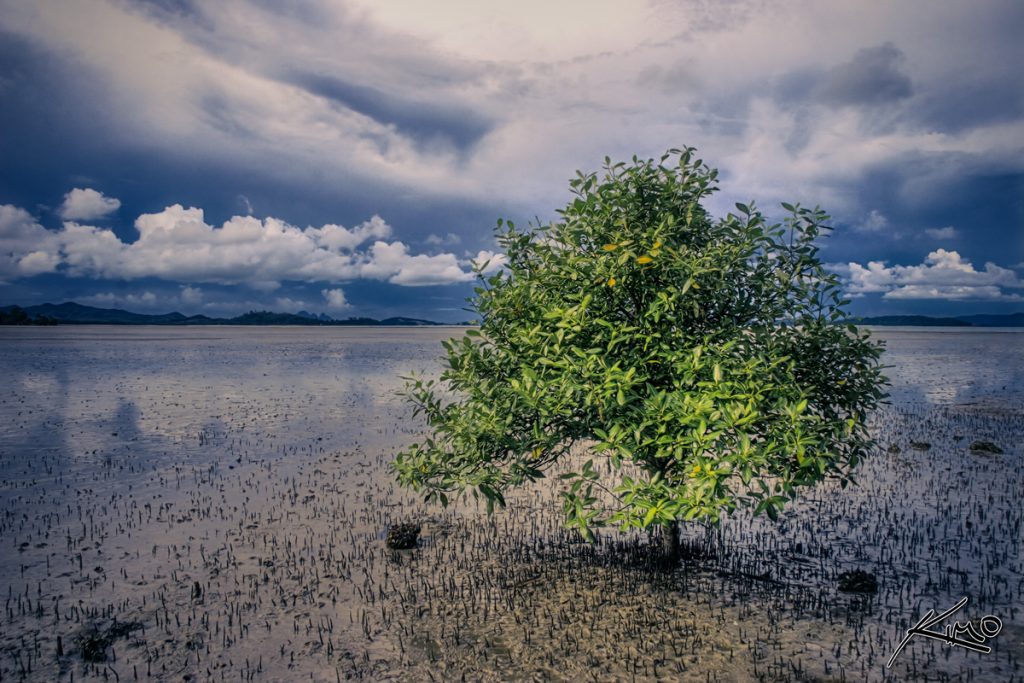When looking for nature-based activities to enjoy in Phuket, visiting a mangrove forest may not be at the top of the list. These dense thickets of trees with intertwined roots that grow in muddy soil are not a scenic sight when compared to the luxuries of a clear sunny beach with beautiful views of the horizon. However, there’s more to Phuket’s Mangroves than meets the eye.
What are Mangroves?
Mangroves or mangrove forests are dense growths of trees that line coastal intertidal zones. They are easily recognisable due to the thick tangle of tree roots that line the edges making it appear that the trees are standing on stilts above the water level.
The mangroves in Phuket line the eastern coast from Cape Panwa in the south all the way up to Baan Bang Rong and Bann Ao Kung in the north.
Why Are They Important?
Mangroves are an important weapon against climate change as they are instrumental in absorbing high amounts of carbon dioxide (CO2) from the air. It is said that mangroves can take in up to five times more CO2 than an entire tropical rainforest of a similar size.
When mangrove forest trees shed their leaves and branches into the low-oxygen soil, these leaves and branches continue to store carbon, unlike in regular forests where fallen leaves will break down and release carbon dioxide into the air. Additionally, the complex root system of mangroves helps to build up more soil which in turn grows more roots. This allows them to store more amounts of CO2 within the tree and in the ground.
The dense growth of mangroves also prevents large destructive tidal waves from reaching coastal towns and villages. This was made apparent during the tsunami of 2004 when many villages were saved from destruction due to mangrove forests that stopped the waves from reaching inland.
Additionally, mangroves help keep the oceans clean by absorbing pollutants and excess fertiliser nutrients that lead to dead zones. They also provide shelter and homes for various birds, monkeys, snakes, fish, crabs, lobsters and other marine animals.
How Are They Being Saved?

Mangrove Tree – Image via Flickr
Maintaining Phuket’s mangroves is the responsibility of the Department of Marine and Coastal Resources. However, due to a lack of funding, eco-tourism has been the alternative. In 2015, a community-based tourism project was launched in Baan Bang Rong as a way to monetize and protect the mangroves in the northern region. Tourists were granted speed boat rides where they could explore the mangrove forest waters.
Additionally, restoration efforts were made through reseeding and planting saplings, although the best method is known to be rewilding which produces healthier trees. By doing their best to protect the mangroves, the Bang Rong community was largely saved during the Tsunami of 2004.
Exploring Phuket’s Mangroves
There are several ways in which tourists and nature lovers can explore the mangroves of Phuket today. Exploring the mangrove forests through a bicycle tour is a perfect way for travellers to stay fit while exploring the jungles and even nearby villages where they can learn of the importance of mangroves.
Tourists can also explore the mangroves while traversing the waters through kayaking or nature safaris. Being out on the waters provides a direct view of the mangrove trees and their thick tangle of roots on the banks.
Those staying along the East Coast of Phuket in resorts like NH Boat Lagoon Phuket Resort should have easier opportunities to explore Phuket’s mangroves that line up this side of the island. While it is ideal to stay in and relax at even the best family hotel in Phuket, venturing out on a guided tour to explore Phuket’s mangroves is guaranteed to be a worthwhile adventure.





